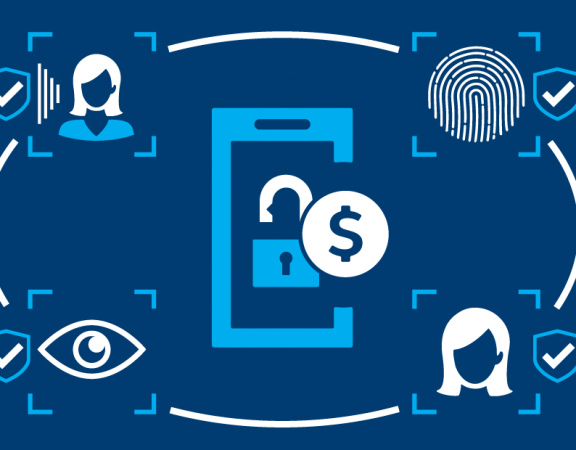Hello!
 Devices that are connected to the internet or open a world of media-centric indulgences are often prone to cyberattacks. As apparent as the threats might be, it is necessary to understand the nature of the same, to prepare our countermeasures for the same.
Devices that are connected to the internet or open a world of media-centric indulgences are often prone to cyberattacks. As apparent as the threats might be, it is necessary to understand the nature of the same, to prepare our countermeasures for the same.
In the subsequent sections, we shall take a closer look at the cybersecurity threats that typically targeted streaming devices or even Smart TVs to a certain extent. However, before we move any further, it is important to assess the vastness of the issues and how massive the breaches can be.
The Reality of Streaming-Centric Cyberattacks
Let’s get one thing clear. The frequency of cyberattacks has nothing to do with the vastness of the breach. Therefore, IoT devices and basic streaming hardware units like Firestick, ROKU, and more can be infected in several insignificant ways. However, once they are attacked, they can be a threat to the nearby devices as a part of the Shadow IoT consortium.
Moreover, the inclination towards streaming services and platforms emanates out of the fact that the streaming market is expected to reach a valuation of almost $688.70 billion, by the end of 2024. This is why cybercriminals are keeping a close eye on the streaming resources and resorting to different methodologies to get the better of the user.
However, not every attack concerns information stealing. Starting from malware distribution to sudden temperature elevations associated with the streaming devices, every untoward anomaly might be an attack. Therefore, the next time you see your device buffering incessantly despite a high-speed internet connection, do consider the possibility of cyberattacks and work accordingly.
 Here are some of the streaming-centric threats associated with cyberattacks that can lead the crusade for the cybercriminals against streaming devices, platforms, and Smart TVs:
Here are some of the streaming-centric threats associated with cyberattacks that can lead the crusade for the cybercriminals against streaming devices, platforms, and Smart TVs:
1. Malware
Probably the most common form of cyberattacks, a majority of malware variants are injected to gain financial perks in return for device access. The likes of ‘Police Virus’ infecting a majority of LG Smart TVs follow the malware suit to the letter. Not just that, malware injection is also common for streaming devices, as a majority of users prefer side-loading applications that aren’t included with the same.
This usually happens with third-party apps, provided side-load without checking for legitimacy. A handful of streaming devices, including the Fire TV Stick, Chromecast, and more, have dedicated third-party app downloaders in play, which adhere to the security standards.
 However, if the attacker still ends up bypassing the security system, your device might end up experiencing several issues, including slower speeds, frustrating spells of buffering, and more.
However, if the attacker still ends up bypassing the security system, your device might end up experiencing several issues, including slower speeds, frustrating spells of buffering, and more.
If the infected device becomes a part of the Shadow IT network and starts infecting the connected ones, you might end up looking at a far bigger threat. Mostly, streaming devices that you can jailbreak, showcasing these anomalies as the unlisted applications can wreak havoc, whilst executing keyloggers and even neutralizing safeguards.
2. Device Vulnerabilities
Issues related to the gadget, in general, can also affect its cybersecurity posture. For instance, certain Smart TVs and streaming devices are most vulnerable when the company upgrades the UI or launches a not-so-efficient or rather a buggy version of the same. These vulnerabilities allow the connected devices to be connected via public APIs, and the attacker ends up running commands to sabotage the sanctity of the system.
Voice-controlled remote shows up as yet another attack vector where certain system vulnerabilities, clubbed with the ability of the voice-controlled device to connect with other devices, make exploitation easier for the cybercriminals.
3. Social Engineering
This attack takes several user perspectives into account, with device sabotaging, information theft, and unscrupulous access in mind. However, unlike malware injection and exploiting system vulnerabilities, social engineering is a multi-faceted threat, comprising strategies like Spear Phishing, Phishing, Baiting, injecting Scareware, and Pretexting.
As a part of the social engineering attack, the unscrupulous party devices plan to pique the curiosity of the user, whilst making him or her visit links that aren’t meant for the device.
 However, Scareware is one of the more common issues where the gadget is bombarded with false alarms, making users shun the existing unit for a new one.
However, Scareware is one of the more common issues where the gadget is bombarded with false alarms, making users shun the existing unit for a new one.
Apart from false positives, phishing attacks are very common for streaming devices, especially if you have certain subscription plans running. Both phishing and spear-phishing attacks involving sending generic and targeted emails to the users, offering subsidized subscription rates and other perks. Once users end up clicking the same, they unwittingly offer device access to the attackers.
4. Physical Attacks
You end up exposing the devices to physical attacks if you allow public or guest access. While some might think that Fire TV Stick and other streaming devices aren’t prone to these threats as they are devoid of any USB ports, issues can crop up if the remote or the connected television is sabotaged. T
hen again, if you have a Smart Television at home, you should never connect untested devices to the USB port, as malicious exploits and scripts can be run using physical access.
 Plugging in a device without scrutinizing the same beforehand can have perilous consequences.
Plugging in a device without scrutinizing the same beforehand can have perilous consequences.
5. Faulty Configuration
A poorly configured device also exposes it to multiple cybersecurity threats. For instance, if the streaming device isn’t configured as per the network guidelines, it becomes a breeding ground for insecure protocols. This is when it becomes easier to tap into the system setting for accessing passwords.
Therefore, the next time you are setting up a Smart TV or a streaming device for that matter, do not keep the same open to existing remote connections, for the same to be exploited by numerous shadow IT devices.
Also read: First Gameplay of Atomic Heart 2 Unveiled: The Gore Is Back in Action
Bottom-Line
 According to research conducted by Kaspersky, 5577 unique individuals faced some sort of threats while using diverse streaming platforms, including Netflix, Hulu, and more. Not just that, almost 23,936 separate attempts were made on these unique profiles.
According to research conducted by Kaspersky, 5577 unique individuals faced some sort of threats while using diverse streaming platforms, including Netflix, Hulu, and more. Not just that, almost 23,936 separate attempts were made on these unique profiles.
This means, every user, regardless of the device he or she is using to access streaming content, is prone to several cybersecurity threats. However, a majority of these issues belong to the factors that we already discussed at length as a part of this discussion.
That said, it is expected that a better cybersecurity posture, led by AI implementations, will mitigate a host of relevant cybersecurity threats, going into the future. However, for that to work, manufacturers will have to be more proactive with their offerings and must aim at minimizing the threat landscape about the streaming realm.
Thank you!
Subscribe to our newsletter! Join us on social networks!
See you!






